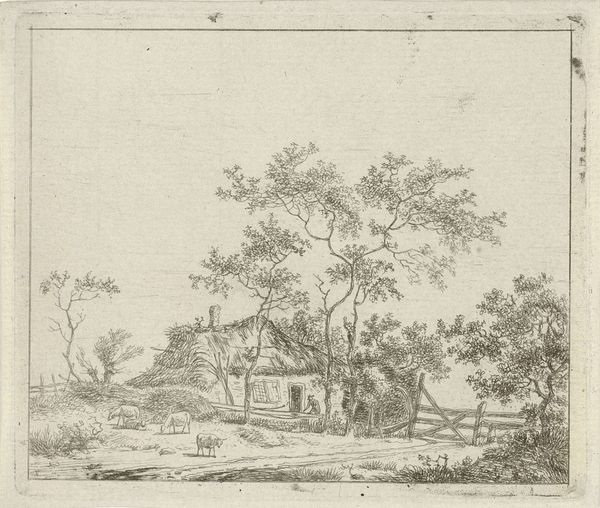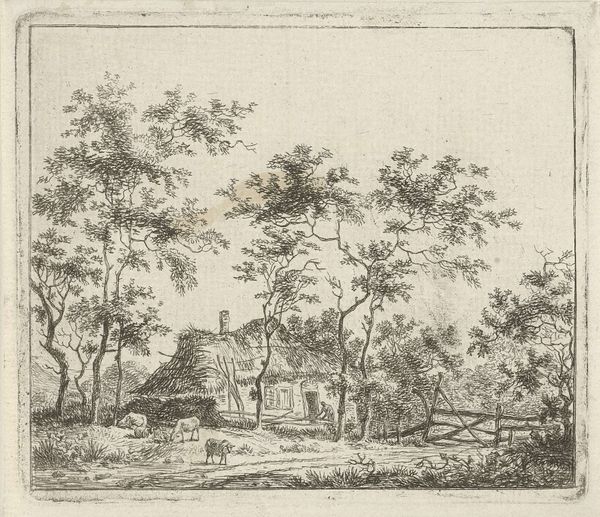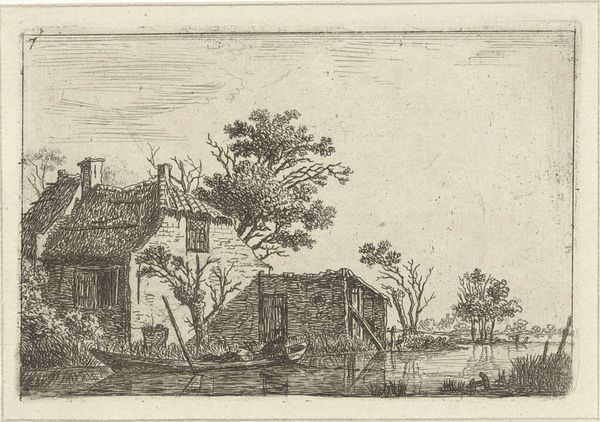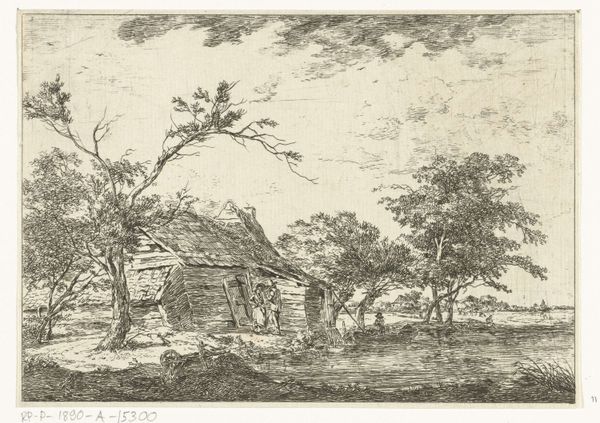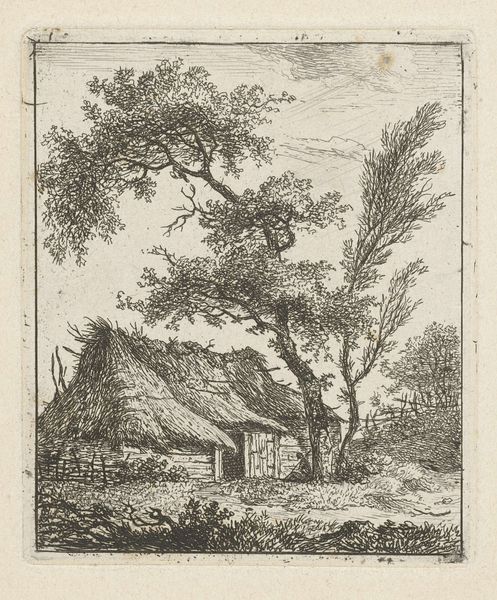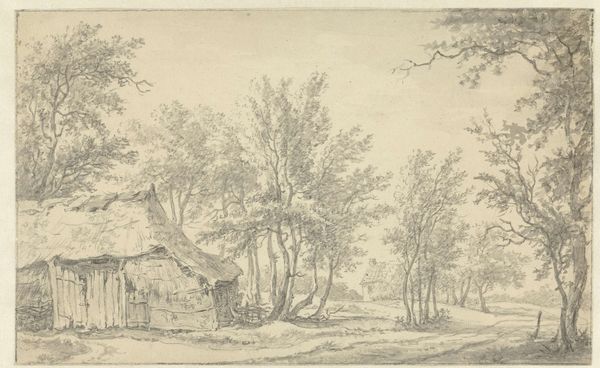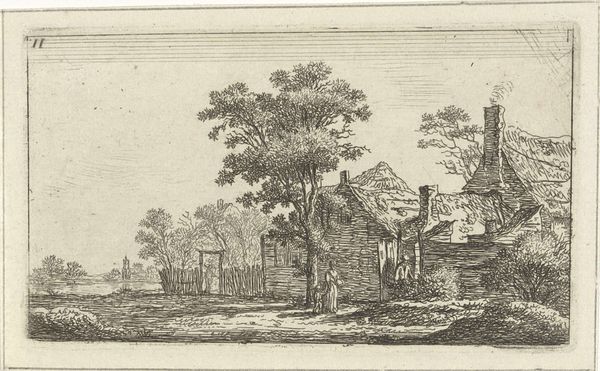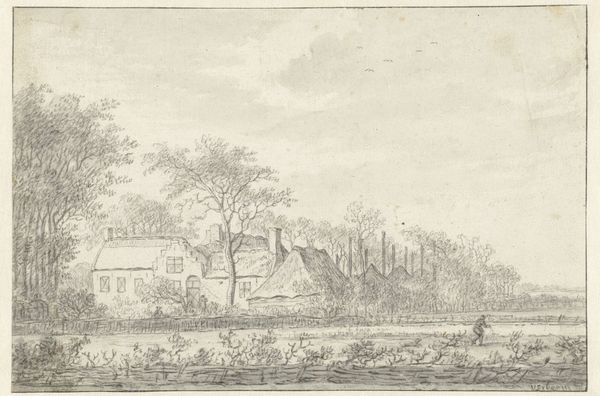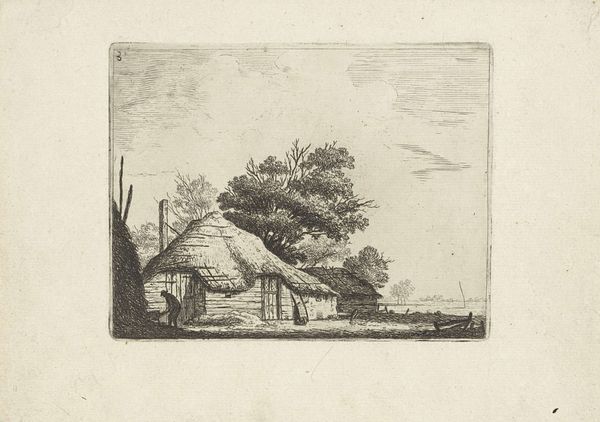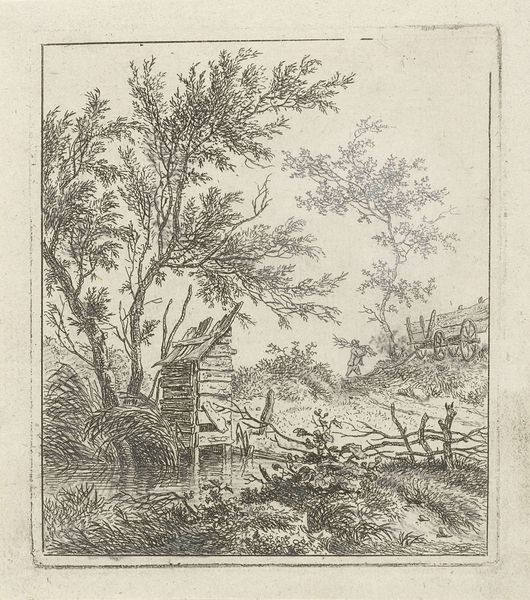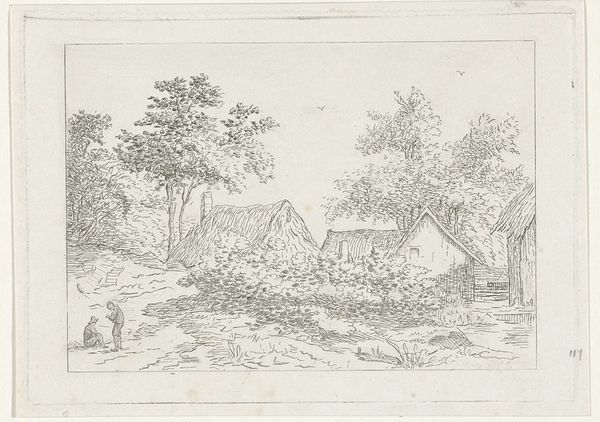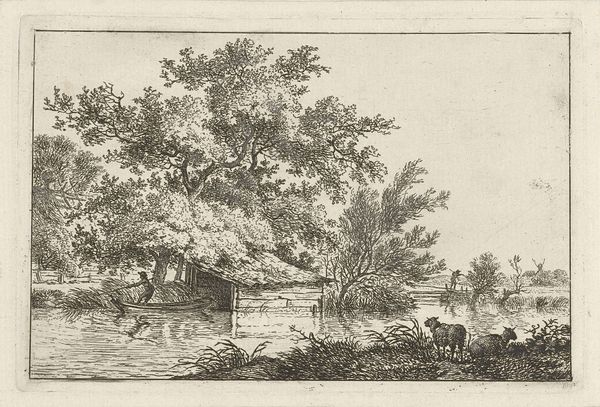
Dimensions: height 106 mm, width 122 mm
Copyright: Rijks Museum: Open Domain
Curator: Here we have "Farm with Four Sheep," an engraving created sometime between 1781 and 1822 by Hermanus Fock. Editor: It feels so calm. A little worn-down, but there's a sense of quiet rurality that almost romanticizes labor, or perhaps hides it. Curator: Landscape art, especially within Dutch visual traditions, certainly carried those connotations. Fock lived and worked in Amsterdam, during a time of significant socio-economic change in the Netherlands. The imagery, with the unassuming homestead, speaks to a vision of simpler life. Editor: And notice how the composition almost feels staged. The way the sheep are positioned in the foreground, almost posing, redirects the eye to the house with an open door and figure in the threshold. Curator: A common artistic technique from the Baroque period to guide the viewer's eye. Consider this through the lens of emerging capitalist systems. How were images of the countryside being deployed to create specific narratives about national identity and the agricultural class? Were idyllic scenes like these a type of escapism? Editor: I’m wondering, who is allowed in and who is kept out? That partially broken fence makes me question who’s meant to access this land. Is it a community space, or is this an argument for ownership? Are we meant to see the home or are we encouraged to only enjoy the livestock? Curator: Excellent point. We should remember that landscape art wasn’t just about picturesque scenery. It was intricately tied to evolving power structures and economic models. Editor: A perspective that keeps me questioning whose gaze we're adopting and how the land, labor, and belonging are being represented. Thank you for providing more historical context around the art. Curator: And thank you for your insight; you’ve given me a richer appreciation for the social complexities embedded within seemingly peaceful scenes.
Comments
No comments
Be the first to comment and join the conversation on the ultimate creative platform.
